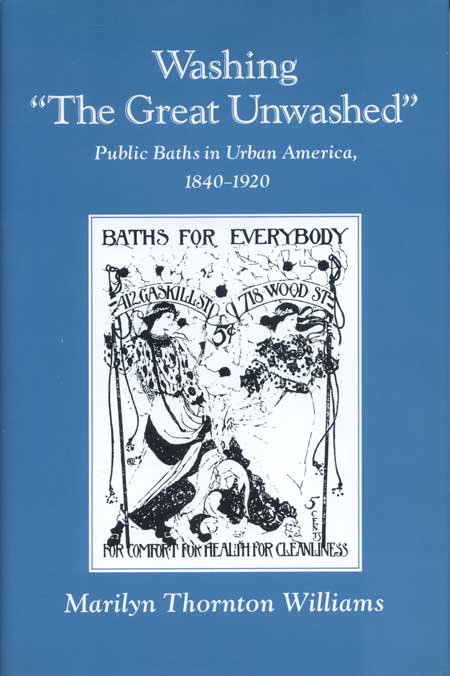| click here to read the full text of this book | leave / read comments and critiques of the book |

Washing “The Great Unwashed”
Public Baths in Urban America, 1840–1920
Marilyn Thornton Williams
Washing “The Great Unwashed” examines the almost forgotten public bath movement of the nineteenth and early twentieth centuries—its origins, its leaders and their motives, and its achievements. Marilyn Williams surveys the development of the American obsession with cleanliness in the nineteenth century and discusses the public bath movement in the context of urban reform in New York, Baltimore, Philadelphia, Chicago, and Boston.
During the nineteenth century, personal cleanliness had become a necessity, not only for social acceptability and public health, but as a symbol of middle-class status, good character, and membership in the civic community. American reformers believed that public baths were an important amenity that progressive cities should provide for their poorer citizens. The burgeoning of urban slums of Irish immigrants, the water cure craze and other health reforms that associated cleanliness with health, the threat of epidemics—especially cholera—all contributed to the growing demand for public baths. New waves of southern and eastern European immigrants, who reformers perceived as unclean and therefore unhealthy, and increasing acceptance of the germ theory of disease in the 1880s added new impetus to the movement.
During the Progressive Era, these factors coalesced and the public bath movement achieved its peak of success. Between 1890 and 1915 more than forty cities constructed systems of public baths. City bosses, reform mayors, physicians, women as “municipal housekeepers,” settlement house workers, businessmen, and philanthropists were leaders in the effort to furnish public baths for their cities.
Public bath reformers, however, were disappointed with bath attendance, which seldom reached capacity except on the hottest summer days. After 1915, more and more slum dwellers had private baths and attendance began to decline. By the 1950s, cities began to close their public baths as the need for them virtually disappeared. The bath reformers were successful in disseminating the gospel of cleanliness, but as Williams shows, the private bathroom, not the public bath, became their monument.
Marilyn Thornton Williams is professor of history at Pace University.
| 1992 249 pp. | This title is no longer available in a traditional print edition. Click here for free access to the book's full text. |
| Urban Life and Urban Landscape |

